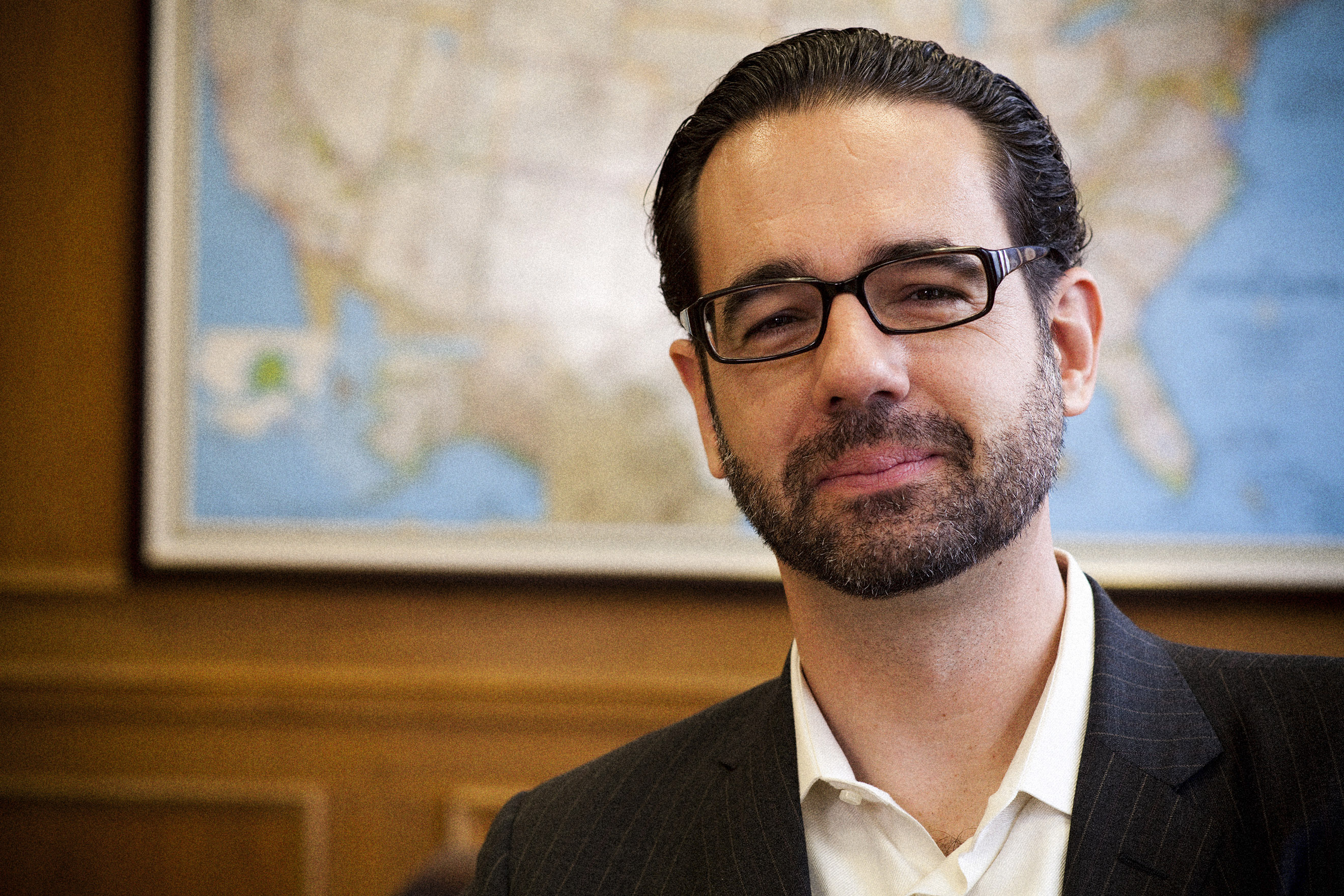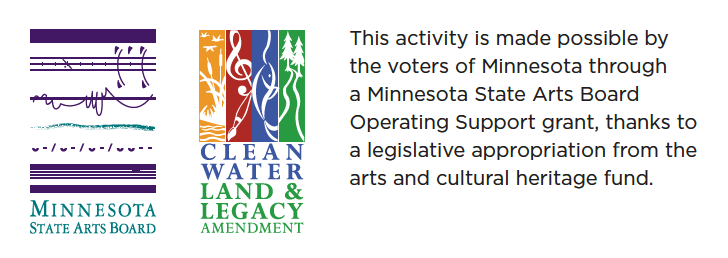Library Salon Series: Q&A with Brent Stickels of AIGA MN
You won’t want to miss our next Library Salon Series event as we open our doors to craftspeople and designers alike. Welcoming back AIGA Minnesota, we’re excited to co-present the “Step Away from the Screen” redux.
AIGA MN member and co-founder of YYES design studio, Brent Stickels returns to moderate another conversation with local designers who also engage in making. Moving the conversation from the computer screen to their studios, these panelists will explore some of the ways that craft and design connect. Our panelists include: Sharon Werner, the founder of Werner Design Werks, Teri Kwant, an experience designer for RSP Architects, Lynn Tanaka, an independent designer, and Jennifer Merchant, a studio jeweler.
I was able to talk with Stickels to preview some of the things he’s excited to cover with the panelists. Please join us on April 11 for a discussion about what it means to be a maker in front of the screen and behind the scenes.
Tell us a little about who you are, what you do, and how you’re connected to AIGA Minnesota.
I’m a co-founding partner of YYES, a design studio in Los Angeles and Minneapolis that we founded in 2000. I studied writing and film, then I began working in design and advertising at a time when computers had just started to displace rubdown type and X-acto blades. Our studio is trusted by clients in the financial, entertainment, healthcare, academic, cultural, and other sectors, and we work on a massive array of projects. Brand identities, websites, brochures, books, print ads, environmental graphics, invitation packages – we have all those and more on our job list right now.
I got involved with AIGA Minnesota when I moved here from Los Angeles 10 years ago. The vibrancy of the chapter and the engagement of the design community here is truly impressive, plus it provides a deep talent pool for YYES. Over the years I’ve become a bit of the unofficial voice of the chapter, hosting and emceeing a variety of events throughout the year. It’s an honor.

Can you tell us a little bit about AIGA and the Minnesota chapter?
AIGA is the professional association for design with 70 chapters nationwide and 25,000 members. Founded in 1914, AIGA works to advance design as a professional craft, strategic business advantage, and cultural force. The Minnesota chapter is the fourth largest and hosts upward of 70 events annually geared toward designers of all levels of experience and types of practice. The chapter’s signature event, Design Camp®, is a unique three-day conference experience held each October in the Northwoods.
The panel, “Step Away from the Screen,” brings together designers who also maintain a handmade studio practice. What is the significance of this theme? What was the impetus to highlight the handmade in a field where the computer often reigns supreme?
Many designers practicing today grew up on computers, and I’m on the edge of that bunch. It’s easy to create finished, perfect-looking pieces on the computer with drop shadows and textures and effects. But the process is quick and kind of lacks soul. Handmade things take time, and I think there’s a certain delight to creating something with your hands instead of a computer input device.
Even with our computer-generated layouts, I still insist on making handmade comps: print it out, fold it up, and trim it down. When you can hold something, you notice nuances that the screen would have hidden. I even print websites that we design, so I can hang pages on the wall and compare them side-by-side. It’s weird, I know.
Can you talk a little bit about each of these panelists and their work from your personal perspective?
I’ve been aware of Sharon Werner’s work since I was copying it as a young designer. When I talked to her about this panel and found out that she’d only recently begun painting, I thought it was perfect: A design legend who’s begun exploring handmade personal expression. I think she’ll have a lot to tell us about stepping outside of what you know and trying something you don’t.
Teri Kwant sat on our panel last October and brought a wonderful perspective. Her professional work is all about creating experiences through interiors and architecture, and her furniture design narrows that focus onto individual objects that exist in a space, but which have personal meaning as you interact with them.
I don’t know Lynn Tanaka or Jennifer Merchant yet, but Lynn is another deeply experienced designer whose assemblage and illustration lean heavily on craft, and I’m excited to learn how making things by hand influences her profession and vice versa. Jennifer is a true craftsperson in her jewelry practice, but she integrates found elements of design into her work. I’ll be curious to hear how she approaches design through the lens of craft.
Can you speak to your own experience with the handmade? How do you find that balance between working with your hands and working on the screen?
At my studio, we emphasize concept over decoration. I teach our young designers to reach for a fat Sharpie when they’re generating ideas. A Sharpie simplifies the process down to strictly what’s necessary to telegraph a concept. To paraphrase George Lois, if the concept isn’t immediately apparent, it isn’t a very good one. Fat-Sharpie drawings help express concepts quickly without fussing over technique. That’ll come later.
Design and craft seem to inch ever closer into similar spheres. What are your thoughts about the relationship between craft and design?
I’ve always thought of design as craft. We speak about crafting our typography, crafting the way a brochure unfolds, even crafting the user experience of a website. Maybe I’m watering down the word when I use it that way, and some people will object, but, then again, I don’t think “commercial art” is a negative term. I’m proud to make well-considered, well-designed, well-crafted things for clients who value it.
What are you the most excited to delve into during this conversation? Are there particular issues or ideas that you’re hoping to cover?
When we held this panel back in October, we had a great discussion about the human connection that comes from the handmade. I want to delve deeper into that – how in this time of mass commoditization and production-on-demand, there’s an even higher premium placed on handmade things.
People just respond to handmade objects. It’s hard to get a tactile, emotional reaction out of something that’s just on a screen.




